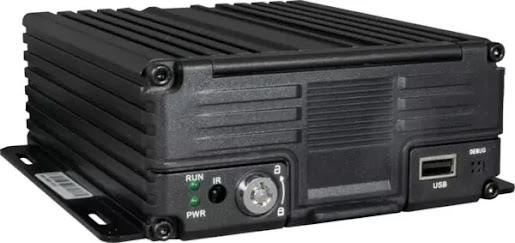Digital Video Recorders- How Do They Work?
Video is recorded by a digital video recorder (DVR) onto local storage media, most frequently a hard disc. DVR may collect video from a digital source or record analog video sources locally. Coaxial cables link DVRs to analog cameras so they can be viewed remotely. DVRs include more features, such as the capacity to search through recordings for occurrences or arrange them by time and date. When storage is full, DVRs may be set up to automatically replace older material. Digital video recorders are a huge craze with the experts and let’s dig in to know more about it in detail.
How does a digital video recorder work?
Users using digital video recorders don't need to install any storage media because the recorder has an inbuilt hard drive and may begin recording immediately. When it comes to analogue camera recording, digital video contains features like remote access motion detection, real-time watching, recording, and backup. Regarding home entertainment, the television signal enters the digital video recorder directly before being converted into a digital format by a MPEG-2 encoder. From there, the material is sent to two distinct targets: the television and the hard disc for storage and viewing, respectively. Digital video recorders in more recent models can concurrently record multiple videos from several channels.
Hardware Features of DVR
may be mounted in a server rack
Several source inputs (coaxial and optical) are possible
output on an external monitor
Camera tilt, pan, and zoom (PTZ) I/O connection
event alerts from security equipment
Alerts for connection problems
Features of DVR software
either user- or event-triggered image capture
User or event-specified recording resolution
Higher quality H.264 video compression with less bandwidth
video analytics such as dwell duration, motion tracking, and direction of movement
Search features for alarms, events, and times
recordings in many audio channels
Archives of video
Different types of video recorders
Here is a quick help for you to choose the best quality video recorders:
TVs with integrated technology
Some televisions include a built-in digital video recorder (TV). These systems simplify cabling and operation by using a single power cable, avoiding linked ports (such as HDMI), and using a single remote control.
Compatible with VESA
Users can combine the TV and digital video recorder into one unit by connecting the CCTV Recorder DVR to the VESA mounting hole (100100 mm) on the back of an LCD TV.
Satellite TV
A separate set-top box, an over-the-air digital video recorder, is used to capture broadcast TV shows. Several businesses have recently introduced over-the-air DVR devices for the consumer market.
Embeddable
A standalone device called an embedded CCTV Recorder DVR is intended to easily fit into more complicated systems. It is typically offered as a small bare circuit board, making it easier to place as a subsystem component in bigger machinery. The control keyboard is often connected via a detachable connection to allow the digital video recorder circuit, which is housed inside the device, to be put outside the system.
Conclusion
Comparing digital video recorders to traditional ways of recording video, there are numerous clear benefits. Digital video recording systems are simpler to set up and use than other comparable devices. Additionally, they can offer better image quality and take up less storage space. Additionally, digital video recorders have quicker data recovery and noise immunity.
A digital video recorder, however, would be unable to accommodate many cameras on a single machine and also be unable to process as many frames per second as network video recorders or video management software. They lack the edge device processing advantages that more recent systems, such as network video recorders and video management software, have.



Comments
Post a Comment